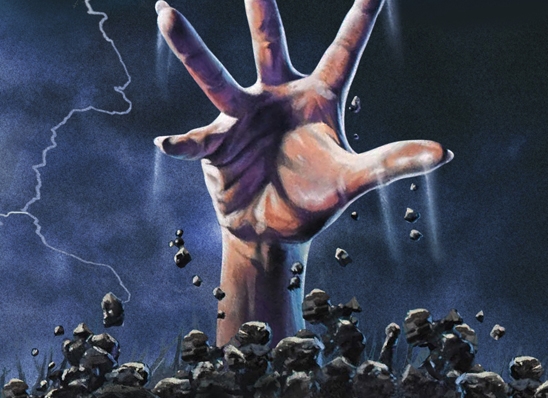By the mid-1960s the horror genre was in a parlous state. The great horror stars of the 1930s and 40s, like Boris Karloff and Vincent Price, were plying their trade in hack B-movies that amused far more than they scared.
The sci-fi craze of the 1950s had dissolved into low-budget nonsense, and no actor with any ambition would be caught dead starring in a horror film.
Jason Zinoman’s Shock Value shows how within four or five years, a group of Hollywood outsiders and eccentrics managed to not only revive the genre but inspire an extremely lucrative horror craze that continues to this day.
Directors and writers like Roman Polanski, George A Romero, Wes Craven, John Carpenter, Dan O’Bannon and William Friedkin took advantage of the end of the old Hollywood Production Code and a loophole in the movie rating system to radically up the ante in terms of violence and tension.
But the films they made were not mere mindless shockers: they were sophisticated and innovative thrillers that had a lot to say about the values and fears of 1970s America.
According to Mr Zinoman, Roman Polanski’s Rosemary’s Baby (1968) was the Trojan horse that helped make horror respectable.
The project was intended to be a pulpy shocker about a woman who gets pregnant by the devil until legendary Paramount producer Robert Evans took the film off hack horror director William Castle and gave it to Polanski, a Polish arthouse filmmaker who turned it into something else altogether.
Polanski shot it on location in uptown Manhattan, introduced a psychological element that made you doubt Mia Farrow’s character’s sanity, and created a stylish and brilliantly unsettling film. New horror was born.
That same year, a group of unknown Pittsburgh would-be filmmakers and actors led by George A Romero made a no-budget zombie picture called Night of the Living Dead.
While Polanski knew practically nothing about horror, Romero paid homage to the great gothic horror masterpieces of the 1920s and 1930s, and his film became a surprise hit.
Because he used a black actor, Duane Jones, in the lead role, his zombie film was misread as a satire on everything from the Vietnam War to American racism. But all that was nonsense, and Romero had merely cast Jones because “he gave the best performance”.
Like Rosemary’s Baby, Night of the Living Dead was set in everyday America, and the new horror used familiar suburban settings to make audiences feel that none of them were safe.
Wes Craven’s Last House on the Left and Tobe Hooper’s The Texas Chainsaw Massacre went to another level in terms of violence and also introduced a new kind of monster — blank-faced, remorseless killers that seemed utterly real, and beyond the pale.
John Carpenter’s Halloween successfully exploited this theme.
Zinoman has unearthed lots of anecdotes that give colour to his narrative. For instance, the actors in the new horror films often suffered almost as much as the characters they played.
Roman Polanski made Mia Farrow walk into oncoming traffic on Fifth Avenue to get a better shot. And Tobe Hooper, the director of The Texas Chainsaw Massacre, kept Marilyn Burns, the actress playing his female victim, away from the actors playing the killers to make her genuinely scared, and subjected them all to 26-hour shoots on a baking set strewn with cow offal.
During an attack scene he stood at Burns’ shoulder yelling “hit her harder!”.
It’s surprising, too, how personal the filmmakers’ inspirations sometimes were. Wes Craven’s ultra-violent revenge dramas were a reaction to his strict and smothering Baptist upbringing.
And writer Dan O’Bannon was inspired to create the famous scene in Alien where a monster bursts out of John Hurt’s stomach by the Crohn’s Disease that caused him constant pain and would eventually kill him.
Shock Value is full of such interesting stories, and gives a good overview of this group of eccentric young filmmakers who revived the horror film and made the genre respectable.
What it fails to do is connect these films to the broader stream of 1970s filmmaking, or explain why the innovation of the 1970s led to the mindlessly formulaic horror of the 80s or the nihilistic ‘torture porn’ of the 2000s.
Zinoman’s sentences sometimes get away from him: in Dan O’Bannon’s “crowded galaxy of resentments”, he writes, “red-hot fury at Carpenter was the sun”.
However he does provide a compelling case for the importance of these 1970s pioneers, and for horror buffs Shock Value will prove an invaluable fund of anecdotes and information.

